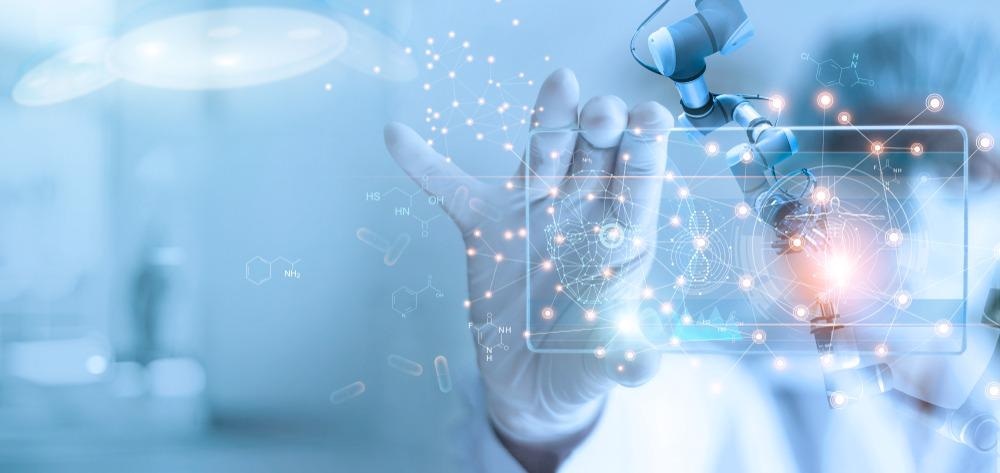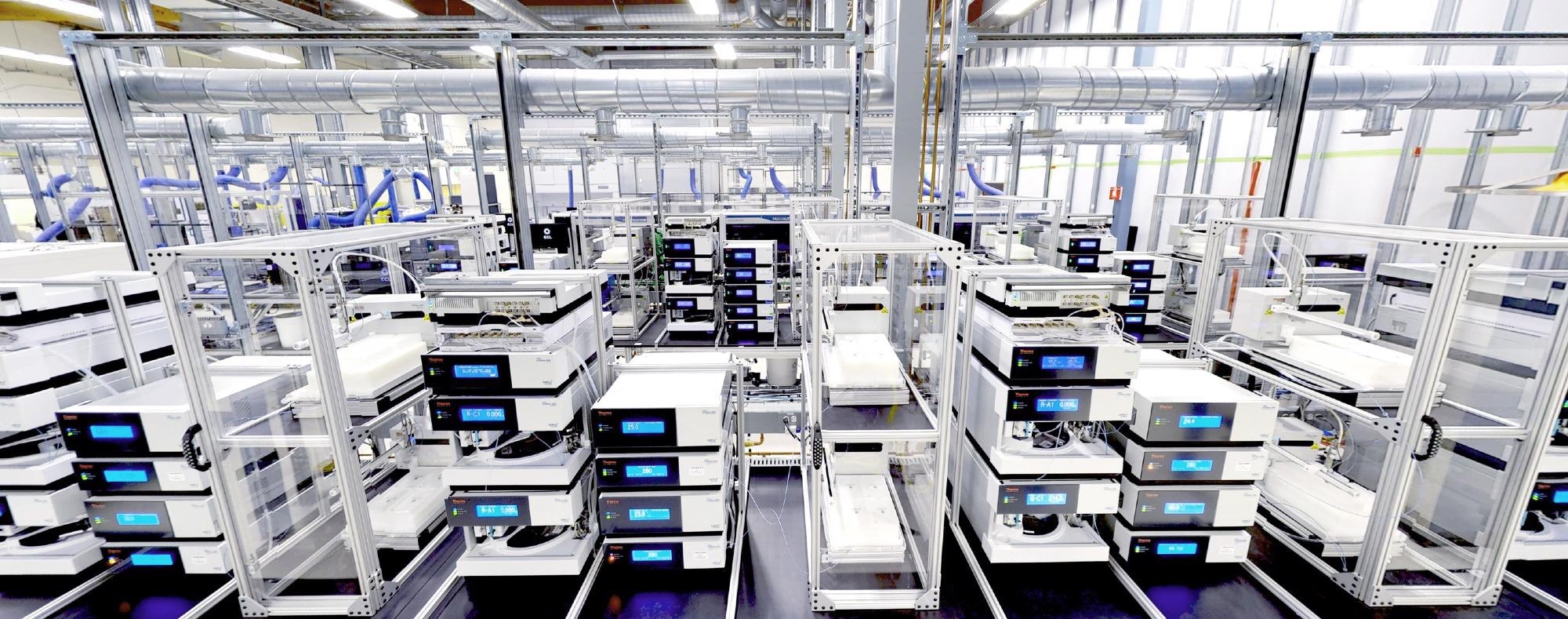In this interview, we speak to Toby Blackburn, the head of Business Development and Strategy at Emerald Cloud Lab, about the future of AI within the life science industry.
Please could you introduce yourself and tell us what inspired your career into the life sciences?
I am Toby Blackburn and I am the head of Business Development and Strategy at Emerald Cloud Lab. I have always had a passion for science and how its ability to transform lives begins in the lab. I received my undergraduate degree in Chemical Engineering at North Carolina State University and joined Biogen in Drug Development, working to scale processes up to manufacturing scale.
A few years later, I went back to school and received my MBA from Duke, and transitioned into an analytical development role. I managed a large CRO budget and a team of analytical scientists, which gave me the opportunity and insight to use tools to streamline lab work more efficiently. What drives me to this day is learning how something that seems so simple on the surface, such as how a laboratory operates day-to-day, can have a major impact on scientific research and discovery.
When I had the pleasure to tour ECL’s facility, I felt that the facility ECL’s co-founders built aligned with this passion and was the pinnacle of everything I was working on in my previous roles. DJ Kleinbaum and Brian Frezza closely examined every aspect of laboratory operations and either developed or found the tools needed to reduce friction in life science research as much as possible.
Large companies such as Google, Amazon, and Apple have been using artificial intelligence (AI) for years and now the life sciences sector has seen AI become increasingly prominent. How has AI transformed the life sciences sector and how important is it to new research and innovations?
AI has transformed many aspects of life science, from drug discovery to clinical decision-making. AI has the ability to improve efficiency in the laboratory by assisting researchers in finding answers to questions that would be time-consuming or infeasible to find manually. At ECL, we focus on providing the infrastructure and tools that scientists need to take that next step in data analysis.
Most of the areas where we use AI are in service of making the interaction between scientists and the lab more efficient. For example, our software helps scientists fill in the details of their experiments. In practice, this happens similarly to a conversation that a researcher would have with a skilled laboratory technician. Overall, AI saves our clients time they can otherwise dedicate to generating new research questions and designing experiments.

Image Credit: PopTika/Shutterstock.com
What sectors within the life sciences is AI predominantly used? How does the use of AI benefit these sectors?
AI serves a range of roles in the life science industry, from drug discovery to drug repurposing, to improving productivity through automation, to supporting clinical trial recruitment and execution. A very common application focuses on predicting which treatments might be effective for which patients, and helping identify an effective drug out of thousands of novel candidates.
At ECL, we believe that with a more robust data structure, AI can effectively be deployed in earlier research and development, and allow scientists to deploy AI in the wide-area between early discovery and clinical data.
You are currently the Head of Business Development for Emerald Cloud Lab. Please can you tell us more about Emerald Cloud Lab and some of your missions?
Emerald Cloud lab was born out of a need that co-founders Brian Frezza and D.J. Kleinbaum discovered while running their first start-up, Emerald Therapeutics. The company had a research plan that was, unfortunately, much more ambitious than their budget allowed. They decided the best way to save time and money was to train their scientists to write code, enabling them to automate many aspects of their work. This greatly enhanced their productivity.
Over time, these tools for both managing experimental data, as well as sending instructions to instruments, developed to a point where most work could be done without those scientists on site. We realized our platform could be useful outside of Emerald Therapeutics, so we spun off Emerald Cloud Lab so other pharmaceutical companies, as well as contract research organizations and academic labs, could benefit from the tools we created.
Our goal is to reduce friction in life science R&D as much as possible. We don’t want scientists to be limited by their budgets or the square footage that is available to them. We want scientists to spend the least amount of time possible on the operational aspects of running an experiment so they can be free to ask new research questions and design experiments to get the results they need to keep moving forward.
Introduction to Emerald Cloud Lab
Emerald Cloud Lab is the only remotely operated research facility that can handle all aspects of daily lab work. What aspects does this include and what are the advantages of having a facility that is capable of conducting remote research?
Emerald Cloud Lab operates 24/7/365, meaning any researcher in the world can log in at any time and run an experiment without ever setting foot in the laboratory. All a researcher needs to do is ship in their samples and design their protocols using the point-and-click interface of our ECL Command Center application, and we take care of the rest. Our clients can control every aspect of their experiments as if they were physically present in the laboratory.
ECL houses 200+ different types of instruments with the full range of capabilities a modern pharmaceutical or biotech company might need. Our facility can handle materials as small as microliters and micrograms or as large as liters and kilograms. Experiments are run using highly-automated tools exactly as the scientists describe in their protocols. Every piece of data connected to an experiment automatically gets saved to a cloud database, meaning experiments are fully traceable and can be reproduced at the push of a button.
We’ve developed software that consolidates the data collected from our 200+ instruments into one interface. This “ECL Constellation” structures data in a graphical database that grows in real-time. The data can be analyzed and visualized to produce publication-ready figures.
This approach vastly reduces startup costs because an organization does not need to build their own laboratory. It also greatly increases productivity because ECL is always running and using highly-automated technology. It also reduces the lead time to get running and takes the legwork of purchasing and maintaining laboratory equipment out of the hands of scientists so they can concentrate on experimental design.
Your remote research facility is connected by a single software interface named the ECL Command Center. How did you design this software and how does it work?
There were two main drivers behind the development of ECL’s Command Center. The first was the challenge of getting hundreds of automated tools to work together seamlessly. Our engineers built a Command Center to consolidate data packages from all of our instruments into one platform so that scientists can design, run, analyze, visualize, interpret and report experiments and results from a single interface. By making every instrument speak the same language, we created a network of research tools that scientists only have to interact with through one, user-friendly, digital interface.
The second driver was the need to standardize how the details of a protocol are communicated to drive reproducibility. To do this, we developed a language called Symbolic Lab Language, or SLL for short. This language makes specifying the complete set of instructions needed to run a given experiment or analyze a data set much easier. It was actually written by scientists to be readable by any scientist familiar with the techniques, and our point-and-click interface in the Command Center makes it very easy for any scientist to design their experiment. This set of tools enables the generation of a comprehensive record of every protocol, sample, result, or activity that happens over the course of an experiment.
You are also involved in a panel at SLAS 2022 called ‘AI in the Labs of Now and the Future’. What should people expect to hear from this talk?
I am excited to join my fellow panelists at SLAS. We will cover a few areas of AI and its application in scientific research. We will talk about the current state of the industry and critical barriers, as well as what is happening across the field to help overcome these barriers and make things easier for scientists. Finally, we will speculate on the future of the industry.
Are there any challenges researchers, companies, and scientists face when trying to adopt AI practices and technologies into their work? If so, what are they?
The biggest hurdle for scientists is being able to more regularly adopt and implement the infrastructure and existing tools needed to run their lab using AI. This is especially true for open-ended research - or when scientists don't have a predefined notion of what experiments will need to happen in what steps to reach for the desired outcome. The current infrastructure for managing lab data was largely set up in the image of lab notebooks.
Many companies are tackling this problem by trying to retrofit data generated in this model to fit the structure required for more in-depth data analysis. At ECL, we’ve tackled this problem by proceduralizing the lab activities themselves, as well as the storage of the data encompassing those activities. In this way, data is comprehensive, organized, reproducible, and ready to be deployed into any given analysis model.

Image Credit: Emerald Cloud Lab
Do you believe that as AI and cloud technologies become more frequently used within research, we will see more people turning to remote laboratories for their research?
Yes, I do. As scientists and companies recognize the reproducibility and trustworthiness of data generated in a cloud lab like ECL, their focus will shift away from concern over laboratory operations and logistics and more towards the science itself. As that shift happens, cloud labs will enable many more experiments to be run and will be accompanied by a huge increase in experimental data, which will further drive the adoption of decision and analysis tools like AI to assist their work.
We are partnering with Carnegie Mellon University to build the first-ever academic cloud lab, which will go online in the fall of 2022. Recently, we ran a pilot study with CMU, where we gave them access to our facility to see how it benefited their faculty and students. One CMU graduate student was able to replicate three years of research in only 3 weeks. CMU is also leading the way in bridging the gap between bench and data science and sees the cloud lab as a critical tool in achieving their vision. I believe as more people try ECL, the physical laboratory will become less relevant to most researchers.
What does the future look like at Emerald Cloud Lab and what do you believe the future of AI looks like within the life sciences across the board?
We are extremely excited to bring the first-ever cloud lab online with Carnegie Mellon University to benefit the entire CMU community. We also plan to add even more types of instruments to our portfolio in our pursuit of housing every standard capability a chemist or biologist would demand from their own laboratory. AI will support us in this mission by assisting our customers in developing more complex workflows and helping our facility function as a cohesive network.
Where can readers find more information?
Overview - https://www.emeraldcloudlab.com/
How ECL works - https://www.emeraldcloudlab.com/how-it-works/
Why use ECL? - https://www.emeraldcloudlab.com/why-cloud-labs/
Instrumentation - https://www.emeraldcloudlab.com/instrumentation/
About Emerald Cloud Lab
Emerald Cloud Lab is a remote-controlled life science laboratory that allows scientists to conduct their experiments without being anchored to a physical lab. In our cloud lab, experiments are driven by issuing commands over the internet, which are then run in a vast, highly automated central facility which operates 24 hours a day, 7 days a week, 365 days a year. In the ECL, you have full control over how your experiments are conducted.